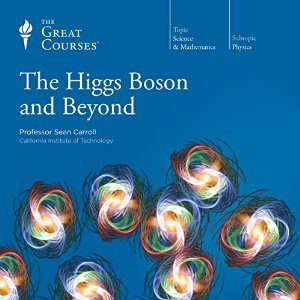First postulated to exist in 1964 by Peter Higgs, the discovery of the Higgs Boson in 2012 was the last piece of the Standard Model of Particle Physics to be confirmed experimentally. It’s verification from theory to reality is momentous in the field of modern physics, not to mention the 10 billion dollars spent on it, so wouldn’t you like to know why it was worth it?
As a chemist, I picture the standard textbook model of electrons circling an atom’s nucleus, but Carroll weaves a fantastic story about the basics of quantum mechanics with a startling revelation — particles are created only when we observe the fields that permeate the universe. With my active listening skills on to their full potential, I highly enjoy the particle zoo (the review of photons, gluons, quarks with characteristics of color, spin, and charm), but I start to lose traction when theory collides photons together using Feyman diagrams to simulate how forces are carried between leptons and quarks. The audio-book only may not have been the best option for a visual learner.
With the four forces of the Standard Model and the symmetries of laws themselves covered, the lectures transition to an in-depth look at the largest machine ever built, the Large Hadron Collider. It doesn’t just smash atoms together to find out what’s inside — new particles are actually brought into existence during experiments that generate 25 petabytes (1,000,000 gigabytes) of data per year! Sifting through all that data are a huge number of scientists from all over the world working cooperatively to push the boundary of our understanding of the universe that much further. I find myself optimistic for the human race.
The Lectures:
-
The Importance of the Higgs Boson
-
Quantum Field Theory
-
Atoms to Particles
-
The Power of Symmetry
-
The Higgs Field
-
Mass and Energy
-
Colliding Particles
-
Particle Accelerators and Detectors
-
The Large Hadron Collider
-
Capturing the Higgs Boson
-
Beyond the Standard Model of Particle Physics
-
Frontiers: Higgs in Space
With the Standard Model complete, are we done? Unfortunately, all the particles/fields that the Standard Model accounts for are only 5% of the stuff that makes up the universe. We still have a lot to learn about dark matter and dark energy, not to mention a better understanding of gravity. We have a long way to go!
Recommended for readers with at least a beginner-level background in science who want a crash course in the Higgs (-Englert-Brout-Guralnik-Hagen-Kibble-and everyone who worked on the Large Hadron Collider) Boson!
